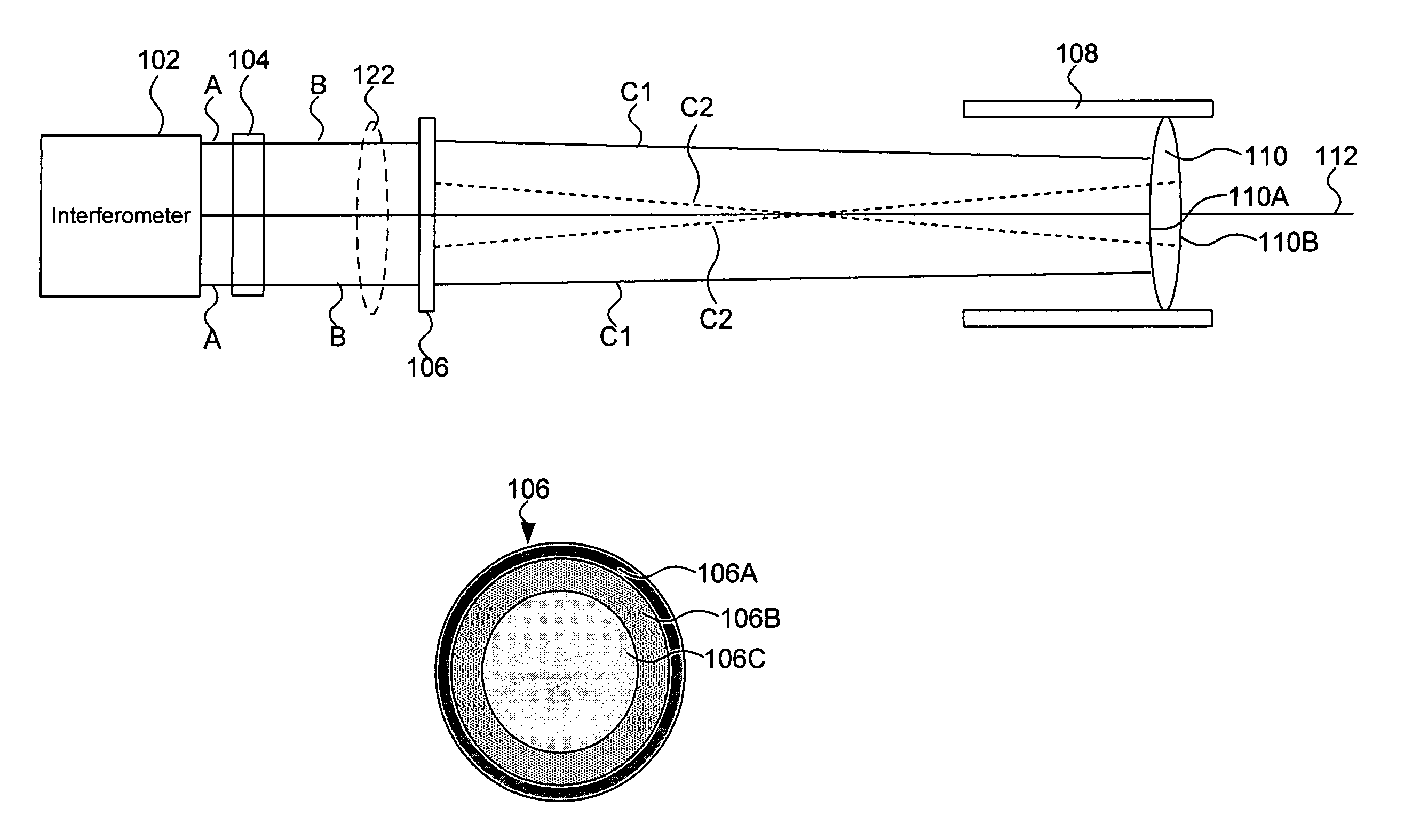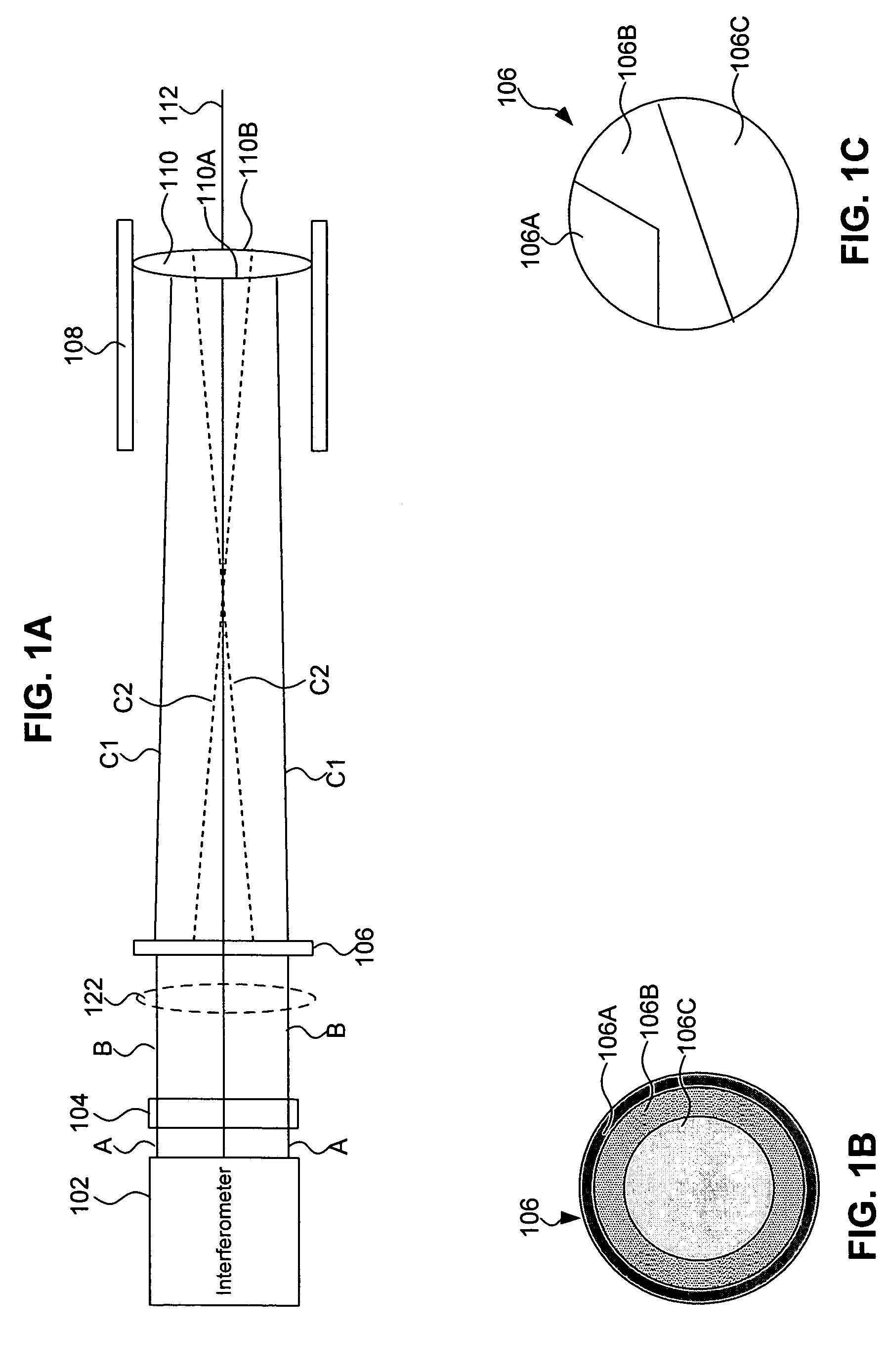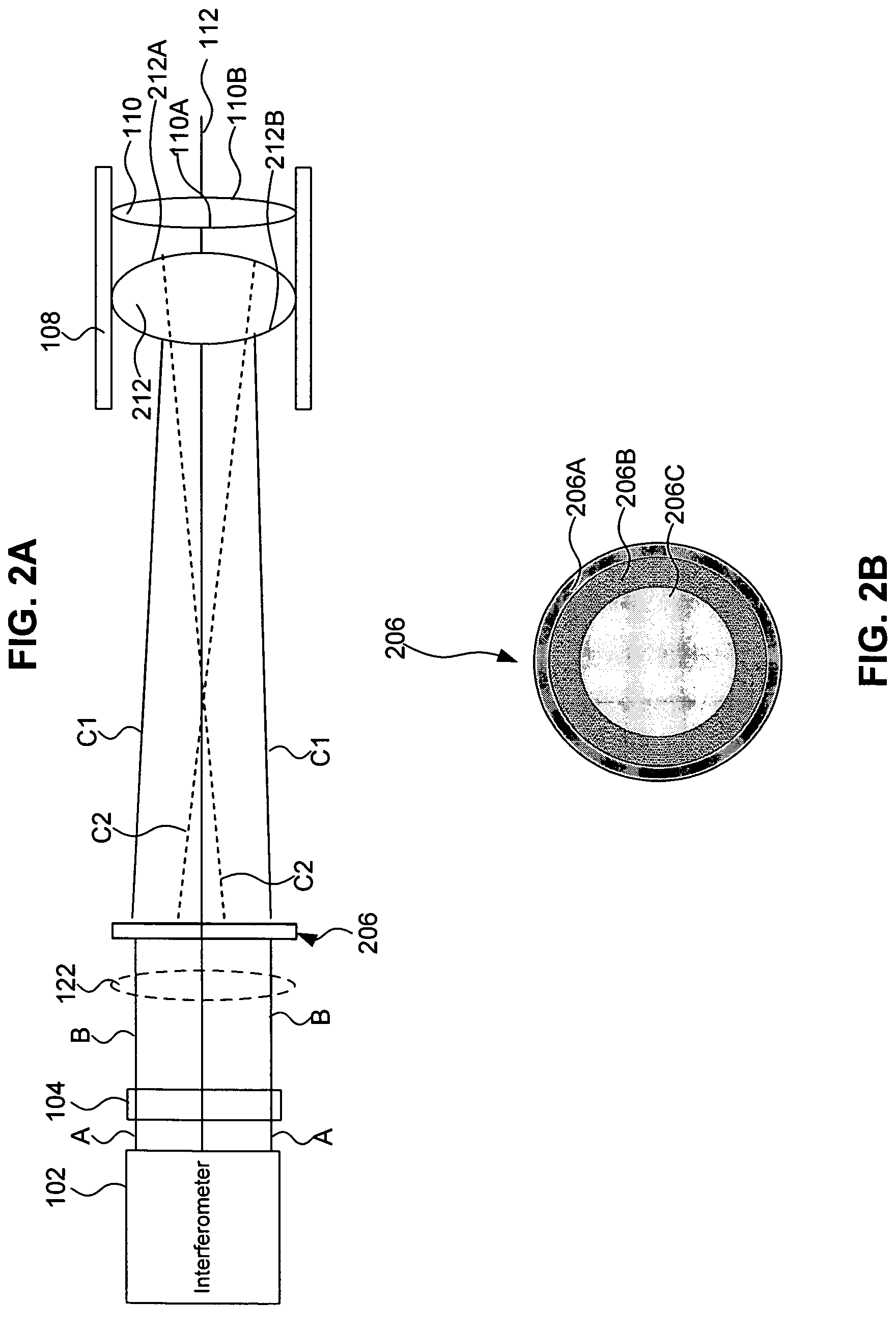Optical system alignment system and method with high accuracy and simple operation
a technology of optical system and alignment system, applied in the direction of measuring devices, instruments, using optical means, etc., can solve the problems of diffraction-limited performance, mechanical indicators and their related tools do not have the required accuracy to align high-quality optical systems, and the first three techniques do not have the necessary alignment accuracy. achieve the effect of high accuracy and simple operation
- Summary
- Abstract
- Description
- Claims
- Application Information
AI Technical Summary
Benefits of technology
Problems solved by technology
Method used
Image
Examples
Embodiment Construction
[0025]Reference will now be made in detail to the preferred embodiments of the present invention, examples of which are illustrated in the accompanying drawings.
[0026]The proposed lens alignment technique uses an interferometer and diffractive optics, with specially designed alignment zones, to align optical systems containing lenses, mirrors and diffractive optics to sub-arc-second angular and sub-micron displacement tolerances. A diffractive alignment element is written preferably using lithographic technologies on a substrate. The grating pattern that is required is easily designed using commercially available optical design programs. The actual alignment process and data analysis is the same as used when testing spherical, aspherical optics using diffractive optics.
[0027]FIGS. 1A, 1B and 1C show an alignment system according to the present invention for use in lens alignment. FIG. 1A shows the overall system, and FIGS. 1B and 1C show exemplary diffractive elements that can be us...
PUM
 Login to View More
Login to View More Abstract
Description
Claims
Application Information
 Login to View More
Login to View More - R&D
- Intellectual Property
- Life Sciences
- Materials
- Tech Scout
- Unparalleled Data Quality
- Higher Quality Content
- 60% Fewer Hallucinations
Browse by: Latest US Patents, China's latest patents, Technical Efficacy Thesaurus, Application Domain, Technology Topic, Popular Technical Reports.
© 2025 PatSnap. All rights reserved.Legal|Privacy policy|Modern Slavery Act Transparency Statement|Sitemap|About US| Contact US: help@patsnap.com



